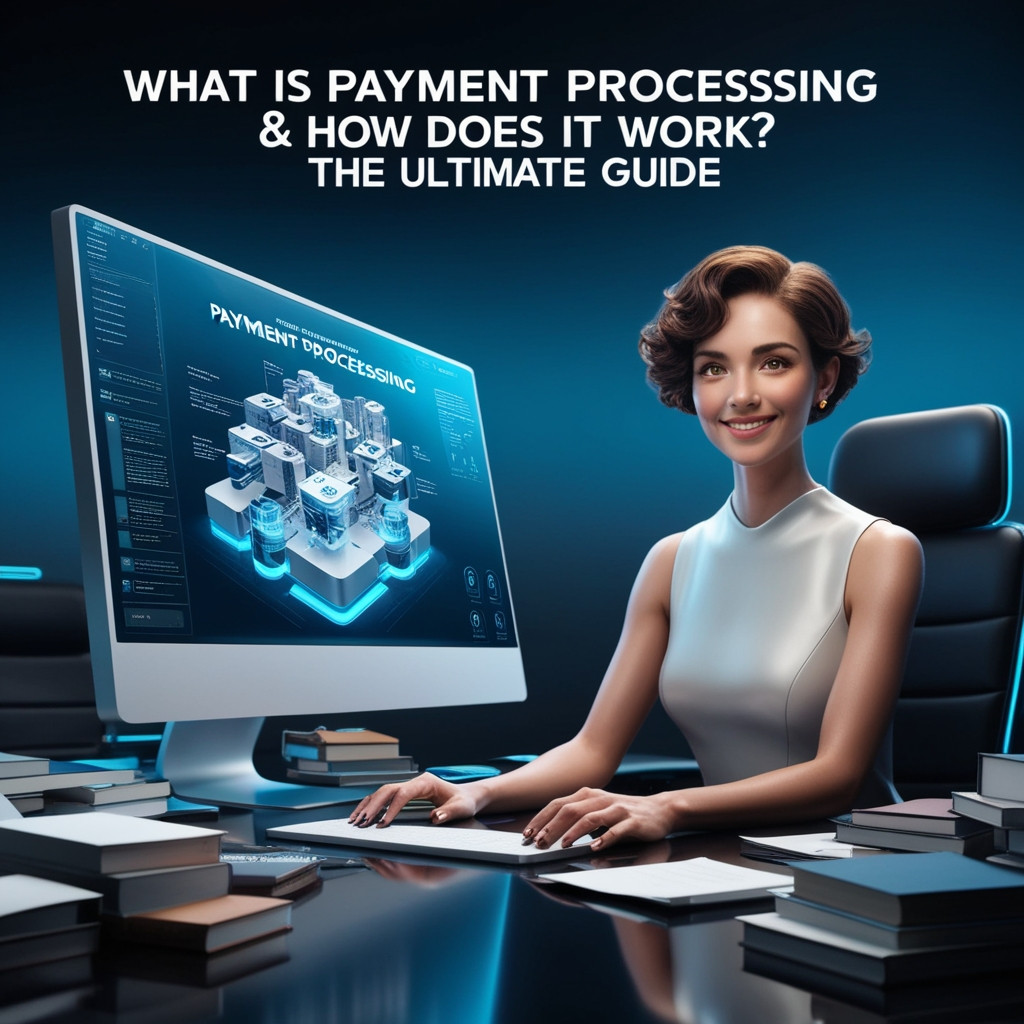What Is Payment Processing & How Does It Work? The Ultimate Guide

What happens behind the scenes when someone swipes their card or hits ‘Buy’ online? Payment processing is like a magic trick that turns a simple click or tap into funds moving from your customer’s pocket to your business account. Whether you run a cozy local store, a bustling online shop, or a sleek travel site, understanding this process is key to keeping everything running smoothly.
How does it all work? What happens in the background to ensure your customers’ payments go through without a hitch? In addition, why is it such a vital part of your business? Do not worry—we will break it down in a fun and easy-to-follow way. Get ready to demystify the world of payment processing—once you know the ins and outs, you will see just how powerful and essential it is.
What is Payment Processing?
Let us start with a straightforward definition. Payment processing happens whenever a customer pays for a product or service online or offline. It transfers money from a customer's payment instrument (like a credit card or digital wallet) to the merchant's account.
Think of it as the electronic version of paying in cash, faster and more secure. When you buy online, the payment processing system effortlessly transfers money from your bank or card to the seller's account, sealing the deal.
Why Payment Processing Counts
Smooth payment processing solutions are vital to business success in the modern age. They:
· Make retail payment solutions smile on the customer's face.
· Facilitate payment solutions for travel and booking to work effortlessly, allowing travelers to pay easily.
· Provide retail stores, online and offline, with access to payment processing.
· Provide secure and convenient channels through which transactions can be conducted.
Without reliable payment processing companies, businesses will lose sales, be open to security threats, or frustrate customers with tedious checkout.
How Payment Processing Works (The Payment Process in Business)
Great question! Let us discuss payment-processing procedures in an ordinary transaction:
Customer Initiates Payment
It begins when a customer chooses an item or service and proceeds to checkout, submitting their payment details (credit card info, digital wallet, etc.).
Authorization Request Sent
The merchant's payment processing system sends a request for authorization to the payment processor, which proceeds to request the customer's bank or card issuer.
Verification and Approval
The bank confirms that the customer has the required funds and accepts or declines the payment. This is critical to secure payment processing systems, verifying that the transaction is authentic and safe.
Approval Notification
Once approved, the system notifies the merchant that the payment is progressing or underway and proceeds with confirmation.
Funds Transfer
The payment processor transfers money from the customer's bank to the merchant account, typically through an intermediary called a merchant account.
Settlement and Confirmation
The merchant is notified that he has been paid, but sometimes, the payment is not immediately received (settlement takes place within a few days). Once the settlement has occurred, money in the merchant account is available.
Receipt to Customer
In addition, naturally, the customer is given a receipt, and the transaction is complete!
Payment Processing Examples
How does payment processing occur in everyday life? Here are some typical examples:
· Your credit card details are processed securely when purchasing online at Amazon or Etsy.
· Electronic payment at the point of sale in the physical shop via chip cards, contactless NFC payment, or mobile payments such as Apple Pay.
· Travel and Booking Payment Solutions, i.e., booking flights or hotels online.
· Recurring subscription services where payment is automatically made.
What is Payment Processing in Banking?
Payment processing is how banks handle electronic payments, such as wire transfers, ACH payments, or card payments. There are secure systems through which money is transferred securely from one account to another after following the rules and security protocols.
Choosing the right payment processing system
It depends on your business needs. If you’re wondering about the best payment processor, popular companies include Stripe, Square, and Adyen. They offer secure payment processing solutions tailored to the retail, e-commerce, or travel sectors.
For example, retail payment solutions often require POS integrations, while travel and booking payment solutions need to handle high volumes and international currencies.
FAQs: Your Burning Payment Processing Questions
Q: What is payment processing?
A: Making a payment from a customer to a merchant safely and efficiently in a transaction.
Q: What is the payment process?
A: The process from customer checkout to settlement of funds, authorization, verification, and transfer.
Q: What is the purpose of a payment-processing job?
A: It's managing transaction systems, making it secure, and facilitating business payments easily and securely.
Q: What is the most used payment method?
A: Credit and debit cards are the most common, followed by bank transfers and digital wallets.
Q: What does a payment processor do?
A: They authorize transactions, security, and money transfer from customer to merchant accounts.
Q: What is payment processing in accounts payable?
A refers to how companies pay their vendors or suppliers electronically, usually by automated means.
Q: What does a transaction processing system do?
A: It consists of receiving the payment details, verifying funds, transferring funds, and settling the transaction.
Final Thoughts: Why Your Business Requires Trustworthy Payment Processing
In short, payment processing sustains contemporary commerce. Whether for retail payment solutions, travel and booking payment solutions, or any other range of payment processing retail, having a solid, secure, and easy system is essential.
Choosing suitable payment processing services in the USA or internationally can boost customers' confidence, avoid fraud, and make payment systems for your company convenient. Find providers with secured payment processing solutions and good customer service from reliable companies.
Remember, payment is in process or progressing quickly, so make sure your system is up to the task! If you’re concerned about payment being processed but not received, ensure your provider offers transparent settlement timelines.





